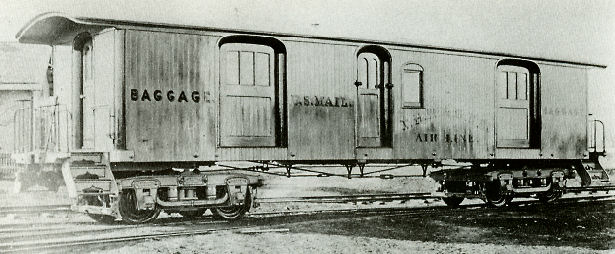New Haven Car CompanyGeorge T. NewhallThis page tells the stories, as far as we know them, of two car builders in New Haven, Connecticut, both of whom built in the second half of the 19th century. We have found nothing to connect them other than one cryptic remark; writing about 1868, Samuel H. Elliot describes a horse-drawn streetcar ride to the north side of New Haven. He says —
Plainly, the carriage works and the works of the car company are in the same vicinity. But is there more than merely geographical and timely coincidence? We have an intuition there was not, so we have presented them together. If you have information on either, won’t you please contact us? The New Haven Car CompanyJames T. Leighton and his brother Dominicus founded the New Haven Car Co. sometime prior to 1868 at New Haven, Connecticut. Built all kinds of cars Operated their sleeping cars for Wagner and for at least one Southern line until about 1879. Ran his own line of sleeping cars [Leighton Sleeping Car Co.] on New Haven RR roughly 1875 - 1885, possibly taken over by Wagner. In 1873 and 1874, received four patents for improvements to sleeping cars, trying to eliminate the hinged upper berth characteristic of Pullman’s patents. Designed a collapsible bed that could be stowed under the seats. Claimed weight savings of 45% (others weighed as much as 34 tons, his 19 tons. Built 7 cars 1876 for Atlantic, Mississippi & Ohio. Wagner, trying to get around Pullman patents, ordered several Leighton cars "the next year" [1877?] but did not continue with the idea. No large-scale acceptance of Leighton idea. [White-239]
Sources cited by White: George T. NewhallOn a visit to Rhode Island, New Haven, Connecticut, carriage builder George T. Newhall noticed that steam power was employed to power machinery in almost every branch of industry. He resolved to try it in his own factory, and though creditors and friends alike thought him irresponsible to the point of insanity, it worked out beyond his wildest expectations. We have found a contemporary account that suggests the possibility that Newhall’s factory was capable of turning out one finished carriage every hour! {403} In 1867/68, when that account was written, Newhall’s factory was located in a semi-rural area about a mile north of the center of New Haven. Its main building was 235 feet long and 35 feet wide, and three stories high. It was filled with machinery driven by a 65-horse power stationary engine driving a main shaft the length of the building. {403} Leather belts were used to transmit power to the individual machines. The 1st floor of the main building contained the engine room, together with all the equipment to work wood from its native state into the various parts and pieces that went into a carriage. There were three machines for turning spokes, and others for turning and mortising hubs. Also on the 1st floor were machines for making bolts. {403} We are not told what occupied the two upper stories. Another, separate, building contained 14 blacksmith’s forges, together with a trip-hammer and furnaces for the manufacture of springs and axles. A third building was 150 feet long and 45 feet wide with four stories. On the 1st floor were the private offices and counting room, together with two large rooms devoted to the building of horse cars. Our contemporary account suggests the building of such was a 1st for New Haven. The 2nd floor was divided into different sections for trimming, coloring and varnishing. The 3rd floor contained a large room for cutting out and preparing the trimmings. Finally, the 4th floor contained a single room running the length of the building that was used solely for painting the running parts of the carriages. The factory employed about 176 men, and before the beginning of the Civil War, whence it lost its Southern customers, was capable of turning out about 2,000 buggies a year. {403} Cast of Characters —James T. Leighton ( - 1892) was born in Portland, Maine. In 1873/74 he was granted several patents for improvements in sleeping cars. Went to work for Jackson & Sharp about 1885; later was employed by the Baker and the Sewall car heating companies. Dominicus R. Leighton ( - ) was born
George T.
Newhall (1821- ) was born |
